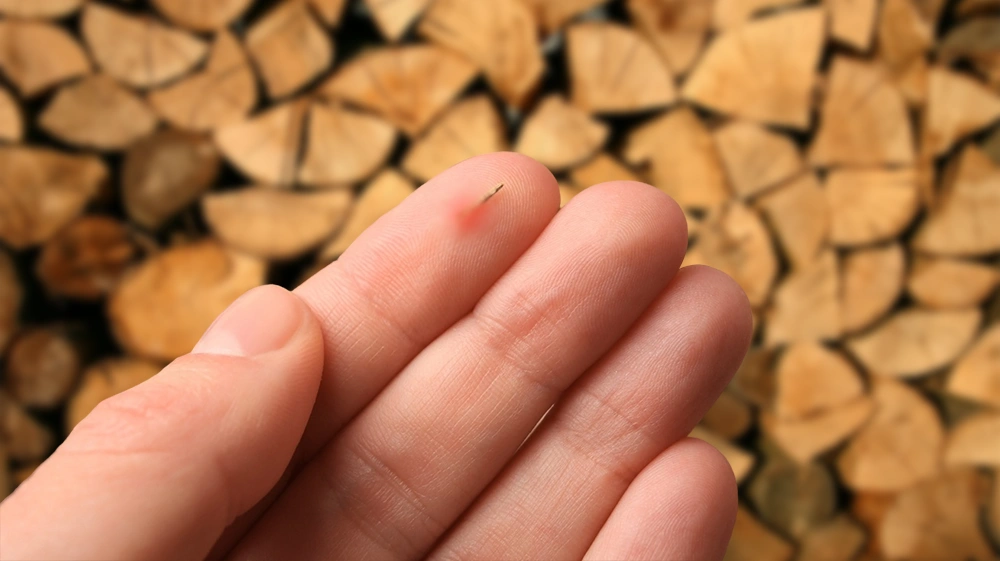
Splinters are typically tiny and usually an irritationirritating, but they can become an infection concern and should not be overlooked. Whether you have a splinter that is more serious and extends deep under your skin or simply a small one, different methods of removalremoval methods are important to avoid getting an infection.
Step-by-step Guide for safe removal of a splinter
Step 1: Assess the Splinter
Before removing a splinter, it’s important to examine the area closely to determine the it’s depth and angle. If it is shallow and clearly visible, removal is usually straightforward. However, deeply embedded splinters may require extra care to avoid causing more damage to the skin.
Step 2: Gather Your First Aid Tools
As with most splinter removals, the key to safety is preparation. For safe removal, the tools you are going to need include a pair of tweezers, a magnifying glass to view the splinter closely, rubbing alcohol or antiseptic to clean the tweezers and needle, a sterilized needle in case the it is deep, and a bandage to cover the area after removal of the shard.
Step 3: How to Remove a Splinter
If you have a splinter and wish to remove it, you should wash your hands and the affected area with soap and water. This step reduces the probability of getting an infection. After that, clean the tools you are going to use, such as the tweezers and needle, with rubbing alcohol.
If the shard is deep into the skin, use the needle to prick the affected area to bring it closer to the surface. Once it’s in a reachable position, use the tweezers to grab it and then draw it out in the same angle it penetrated the skin to ensure it does not break.
Step 4: Clean and Protect the Wound
Once the splinter has been extracted, wash the site one more time with an antiseptic to eliminate any germs sticking close to the skin surface. Lastly, be sure to cover the area with a bandage to further prevent the wound from getting infected as it heals.

Ready to Learn More?
Know how to get your splinter out safely. Our First Aid courses offer complete training to help you handle critical situations. Whether you want to improve your skills or workplace safety, these courses help build confidence and expertise. View our Emergency First Aid at Work (EFAW) and Level 3 First Aid at Work courses. These courses meet the UK legal requirements and help you keep people safe.
How to Get a Deep Splinter Out
Pulling out a deep splinter is a very delicate procedure. Avoid excessive digging, as this may compound the situation by worsening the wound and increasing the risk of an infection. If the shardfragment is not easily visible or removable, or if it is sore or oozing pus, it is better to let a physician remove it rather than tryingtry it yourself.
Signs of a Splinter Infection
A splinter infection occurs when bacteria get into the affected area. There are some signs to watch out for, including reddening of the skin near the wound, skin inflammation, visible pus, discharge or fluid coming from the wound, increased pain, and the wounded area becoming warm. Such an infection can lead to more serious consequences if not treated.
How to Treat an Infected Splinter at Home
An infection should be treated with considerable precaution from the comfort of your home. First, wash the affected body part with warm water mixed with soap or warm water containing Epsom salt to help ease the skin and reduce inflammation. If the splinter is very painful, once you have removed it, wash the area with an antiseptic solution. To avoid further infection, use an over-the-counter antibiotic ointment and a clean dressing on the wound.
If the infection does not improve or worsens, it is time to seek professional medical help.
Preventing Splinter Infections
Success in the prevention of one illness can lead to success in the prevention of others. Who said that “prevention is better than cure”? In the event of exposure to potentially splinter-causing materials, clean any cuts promptly and properly to minimizeminimise the chances of developing an infection. During woodworking operations, gardening, or handling sharp objects, protective gloves can offer additional protection.
Conclusion
Being aware of how to remove a splinter and care for it can help spare anyone hours of discomfort or complications. Whether you are removing a splinter it or teaching someone how to handle an infected splinter one at home, adhering to these steps increases the chances of successful splinter removal and prevents potential infections. Prompt application of the proper measures after an injury occurs can prevent minor harm from developing into significant damage.




